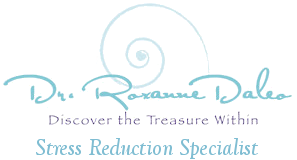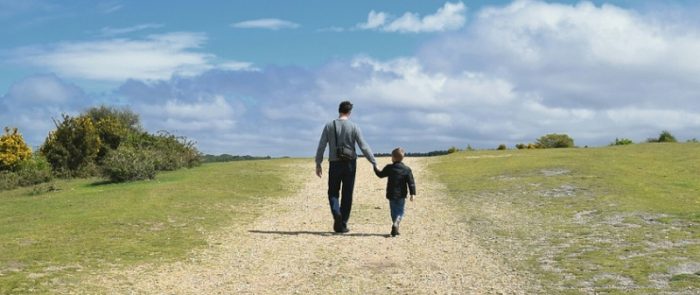In today’s increasingly complex, and sometimes harried world, our children are more vulnerable to symptoms of stress. Feelings of anger, worry, nervousness, depression and loneliness can escalate for children who are unaware of how to manage stressful events. Both positive and negative life events can cause stress in the mind/body system. Children’s inability to know how to manage these types of emotions may be displayed in behaviors such as angry outbursts, impulsivity, aggressiveness, defiance and withdrawal. Disconnection from emotions may also be exhibited in physical symptoms such as headaches, changes in eating and sleeping patterns and lowered immune responses. This can be distressing for children at all ages and for the parents and teachers working with these children. Scientific findings in mind/body studies assure us
the body’s wisdom has a built-in mechanism for regaining clam and balance if we learn skills to elicit the relaxation response. But it seems the most common reaction to stress is to ignore the warning signs, missing the opportunity to restore well-being using natural methods. More importantly, parents must find within their own apparatus the spontaneous ability to parent with power.
Often, I am approached by parents of middle school students whose kids are expected to keep up with the accelerated pace of academic and social life. This pressure includes the preparation for standardized testing and excessive use, almost an addictive quality of connecting with peers through mobile devices. Ask your child to put away his phone and you would have thought you’d asked him to cut off a limb! The intense objection is so alarming, most parents are at loss for their authority in the moment and give up.
If parents themselves haven’t already rushed to get their kids on prescription drugs -thinking this will help; many more kids are smoking marijuana to decompress or buying medication from their peers to ease the chronic anxiety they feel.
What is happening to our kids? In this age of technology there is more dysfunction than function. Our culture is promoting numbing out.
I believe what is missing is the tolerance for discomfort, for “not knowing”. What do I mean by tolerance? I mean we are human beings having a human experience and part of that is having a range of emotions from happy to disappointment from frustration to anger from sadness to pain. All of our feelings there to be felt, appreciated and most importantly grow from. Often discomfort informs us of a need for change, readjustment and adaptability.
Do you notice your family atmosphere is more chaotic than calm, more frantic than fun?
What is missing is the ability to establish a feeling of inner strength, security, confidence and feeling good about yourself —no matter what is happening in life.
I believe what is essential is for parents to reclaim your power to parent, not by using a particular strategy but by recognizing the absolute potency of attachment, specifically “bonding” with your child. When you know how to strengthen the bond you have with your child, you draw him closer. You do this when you act as his compass point. And one of the easiest way to
develop this skill and bonding experience is to make time to be with him. To be present.
Discover together the pleasure of hiking the unmarked trail.
Turn off the cell phone and turn on your physicality with your child. Get outdoors-shoulder to shoulder, stay close, give of yourself, tell him your story as you walk in nature, breathe, feel the freedom, the expansiveness, the life force energy all around you! Allow the “not knowing” of where the trail will take you to become the way of being in the moment…moment by moment…allow the “not knowing” to connect you and keep you safe…allow the “not knowing” to let your child lean on you as a guide…
Here’s the secret sauce: Give your child something of you that he cannot get from his peers, devices, or drugs. Tellyour story, it is the most powerful thing that distinguishes you from everyone else!
Perhaps, you could take a picnic lunch, sit under a tree or by a waterway and tell your story.
A story of a time in your life when you felt anxious, scared, afraid and what you did to help yourself. Maybe it was that you took vigorous bike rides to cope or ran as fast as you could to blow off steam, wrote in a journal, painted, sculpted, took out hammer and nails and build something. Whatever it was, it is the most powerful form of connection you can use to restore the attachment relationship.
What is the quality of a parent “being present”? Presence has the quality of staying with; feeling with. When you can feel with your child, the feelings of discomfort as well as that of pleasure, you model “being present” to all emotions. You are actually holding a space inside your heart, not rushing to take away the pain, but instead, being able to give witness, support and reassurance in an energetic way of being with the pain, first and foremost. Rather than rushing to take action which pushes the pain away or denies it.
We always rush to take the pain from our child or avoid it in the first place.
We can only foster emotional intelligence by flexing the muscles of maturity to withstand unwanted emotions; to feel and accept them thereby developing inner strength. Discomfort allows us to stretch ourselves to make room for discomfort without pushing our feelings away or avoiding them altogether. Life is both pain and pleasure. It’s normal.
Be your child’s compass point, then point the compass itself true north and hand it to your child to navigate the way ahead. While he does, share your story of taking one step at a time in the direction of your dreams.
Tell about the importance of having inner vision, even though your trail is unmarked and there are no sign posts on the path.
Tell of the passion in your heart for your vision in such a way as to transmit the feelings of that vision successfully accomplished and seeing it done!
I know this communication is powerful; it ignites our imagination while listening to the story-teller. I know because my Dad could bring his young life to life every time he told me the story of how he fell in love with Mom. He was sixteen, she was fourteen years old, their dates were at he corner store for an ice cream or a stroll through a park. But always, they would share vision. Dad would do this by taking Mom by the hand and hiking up a mile high stairway in Edgewater, New Jersey overlooking the Hudson River and New York skyline. He’d sit next to Mom holding hands they would dream a dream of a better, more glorious life for themselves.—going to college, getting a degree to become a Certified Public Accountant, designing and building their own home, having children and a happy family. Against the odds and hard knocks; it all came true.

